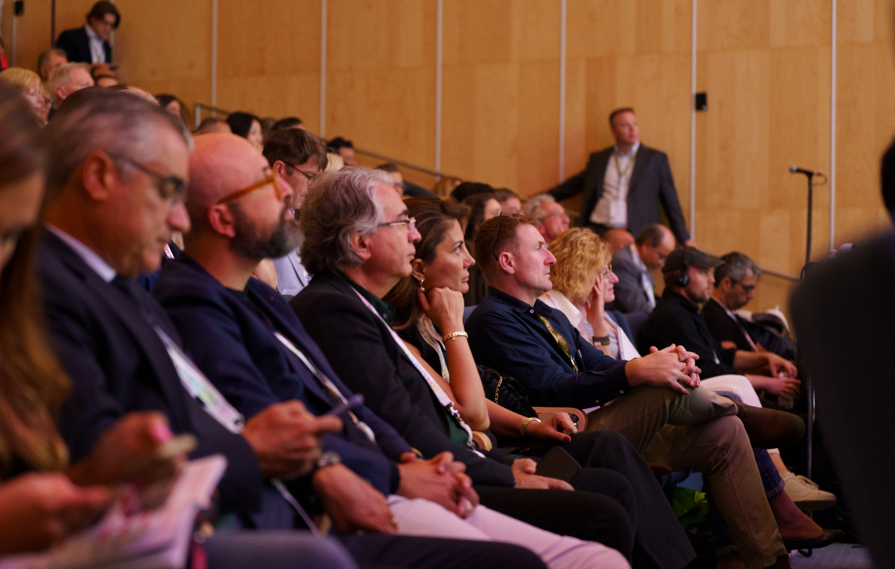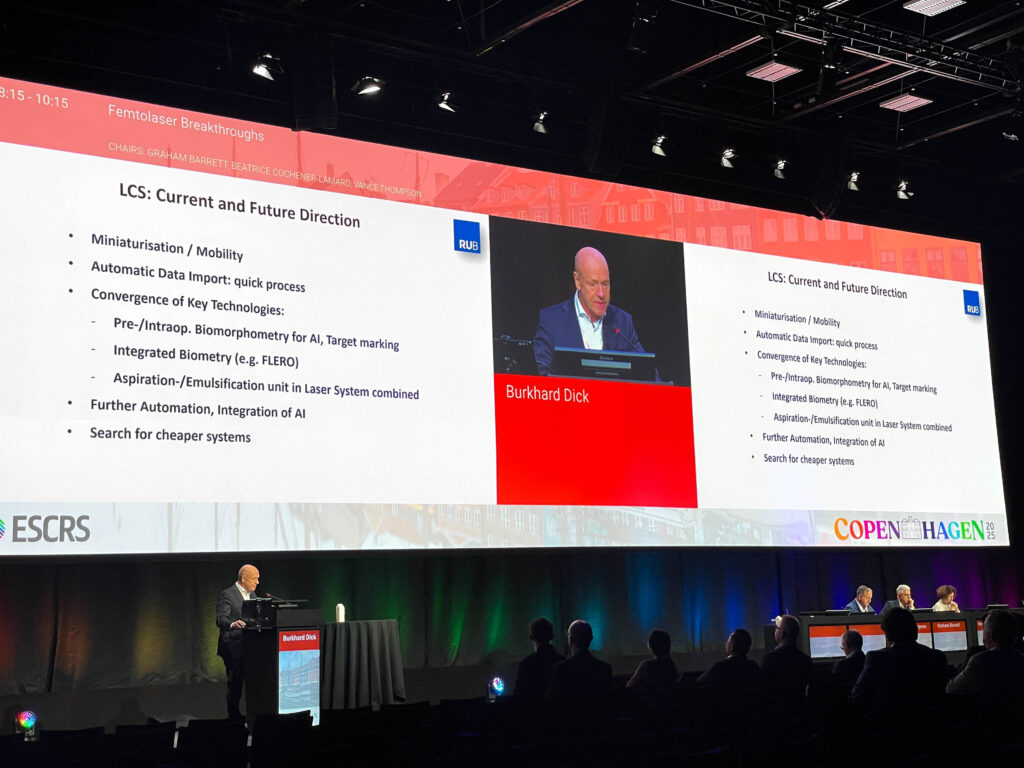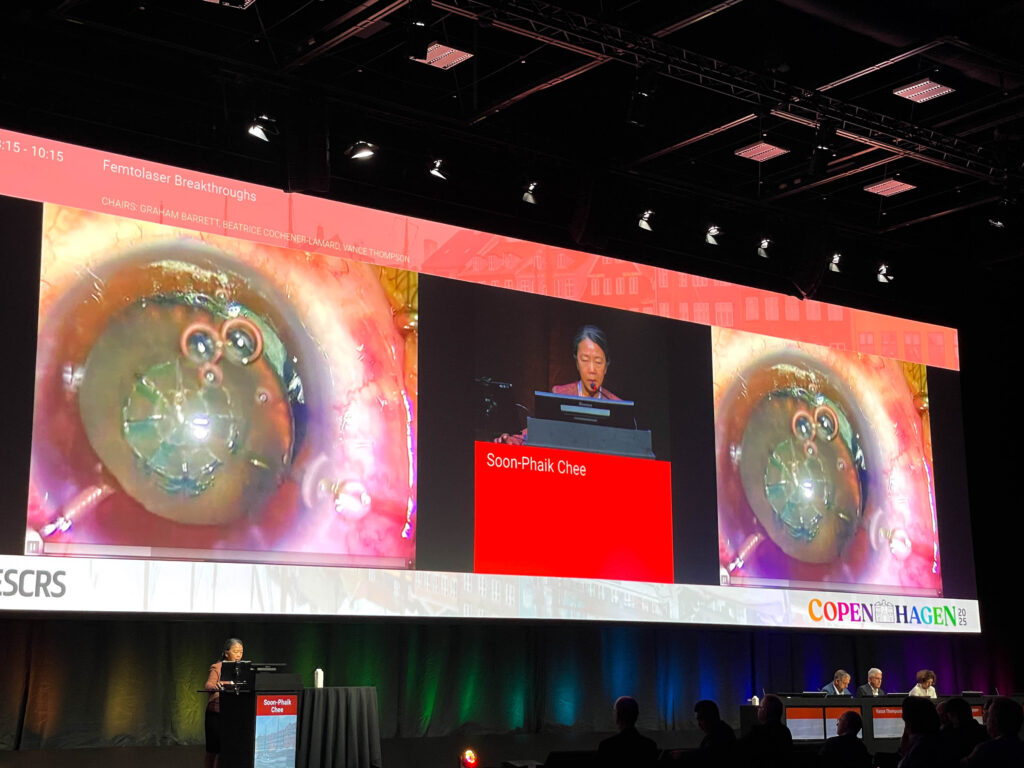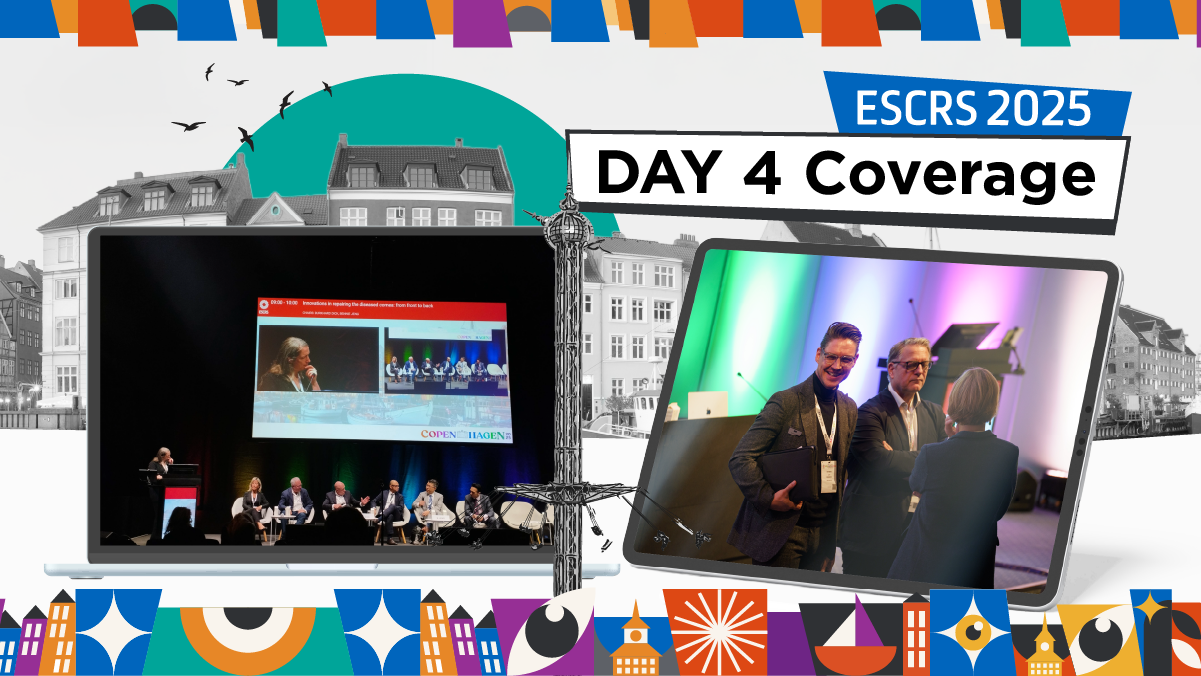From femtosecond finesse to future-proofing, our closing act in Copenhagen proved that when it comes to surgical innovation, the devil—and the genius—lies in the details.
Our last day in Copenhagen for the 43rd Congress of the European Society of Cataract and Refractive Surgeons (ESCRS 2025) has come and gone, and what a Copenhagen curtain call it was.
If Day 3 belonged to the visionaries, Day 4 belonged to the engineers that bring those visions to life with the kind of reliable, scalable solutions that patients need.
The mood was less “eureka” and more “exactly so”, and our three symposia delivered a series of intriguing closing statements: femtosecond lasers may have moved from novelty to necessity, future-proofing requires more than wishful thinking, and corneal repair is becoming a layer-by-layer engineering exercise.

Session highlights
Femtosecond laser breakthroughs and precision became the watchword as Prof. Béatrice Cochener-Lamard (France), Dr. Vance Thompson (United States) and Professor Graham Barrett (Australia) charted femtosecond’s evolution from surgical luxury to clinical necessity.
Professor Burkhard Dick (Germany) showcased compact, mobile devices that finish capsulotomies in seconds, while Dr. Dagny Zhu (United States) explained why her Los Angeles practice hits 100% femto usage. Professor Soon Phaik Chee (Singapore) perhaps said it best: “With femto, uncertainty shrinks and predictability grows.” Take the full technological tour here [LINK]!


While others debated surgical gadgets, our second symposium tackled the unglamorous business of future-proofing ophthalmology as demographic reality reshapes healthcare. Professor Mats Lundström (Sweden) delivered sobering news about Europe’s population pyramid morphing into a hexagon, while Dr. David Chang (United States) challenged the field’s environmental conscience. Discover strategies for tomorrow’s biggest ophthalmic challenges and read now [LINK].
The AAO Mini Symposium on corneal repair innovations proved that when donor tissue is scarce, ingenuity fills the gap. Dr. Victor Perez (United States) opened with genetically modified limbal stem cells engineered with “diplomatic immunity,” Dr. Sayan Basu (India) unveiled a three-act stromal strategy, and Professor Sorcha Ní Dhubhghaill (Belgium) closed with the EndoArt®’s elegant synthetic simplicity. Like Danish LEGO blocks, each presentation added another piece to the corneal repair puzzle. Explore the layer-by-layer revolution shaping cornea [LINK].
Industry data round-up, final edition
Johnson & Johnson’s TECNIS PureSee™ IOL now has some compelling real-world validation data with over 250,000 implants showing 96.8% spectacle independence for distance vision. Jacqueline Henderson, President EMEA Vision, emphasized the strategic momentum: “Since debuting on this global stage last year, TECNIS PureSee™ IOL has gained significant traction worldwide.” Prof. Oliver Findl (Austria) provided clinical confirmation: “These real-world results mirror what we see in daily clinical practice: reliable outcomes and satisfied patients.”
WATCH NOW: Dr. Naren Shetty Dives Deep into J&J’s TECNIS PureSee™ IOL’s Clinical Performance
Rayner’s landmark St. Thomas’ Hospital study settled decades of materials debate with the first randomized trial directly comparing hydrophilic and hydrophobic IOLs from the same manufacturer. Results showed no statistical difference in PCO formation (p=0.14). Tim Clover, CEO of Rayner, positioned the findings as liberation: “This result proves equivalence and allows surgeons to choose their lens material based on handling characteristics alone.” The research suggests surgical technique and edge design matter more than material itself.
Editor’s Note: The 43rd Congress of the European Society of Cataract and Refractive Surgeons (ESCRS 2025) was held from 12-16 September in Copenhagen, Denmark. Reporting for this story took place during the event. This content is intended exclusively for healthcare professionals. It is not intended for the general public. Products or therapies discussed may not be registered or approved in all jurisdictions, including Singapore.
